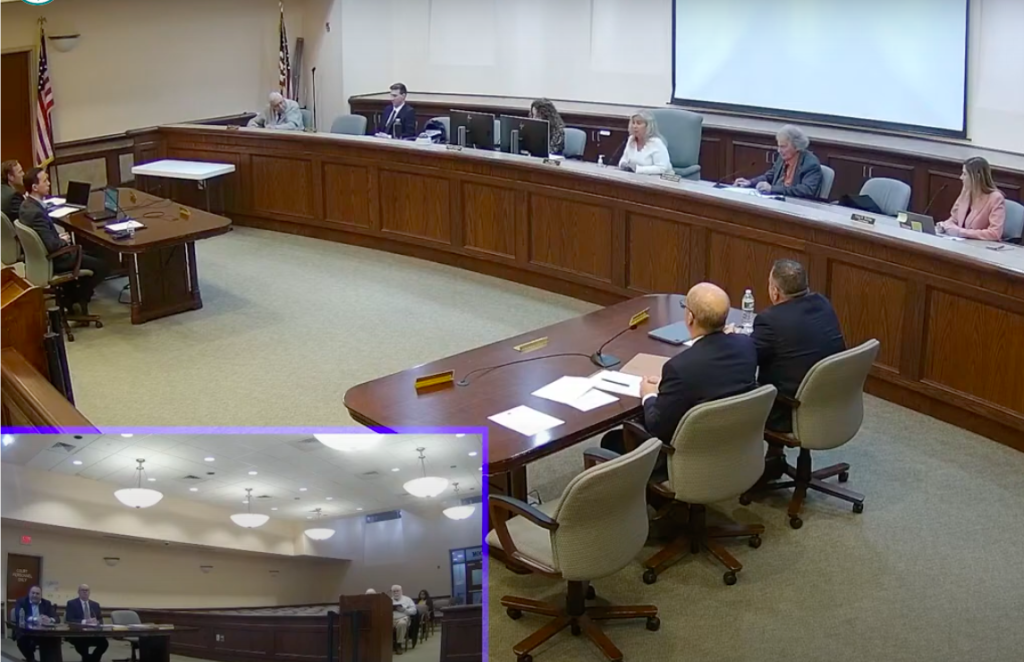
By Sunayana Prabhu
TINTON FALLS—The county commissioners have introduced a $20 million bond ordinance to finance improvement costs to mitigate the odor from the Monmouth County Reclamation Center (MCRC) landfill that has angered residents for months.
In a brisk 90-day phased plan, the details of which were released in a newsletter Feb. 28 on the county’s website, Monmouth County Director of County Commissioners Thomas Arnone assured residents that significant progress will be made as quickly as possible to reduce odor issues.
In an effort to update residents, Arnone also sent a letter, read by council member John Manginelli during the March 5 borough council meeting, conveying the progress made at the MCRC landfill over the past six weeks. Some of the mitigating projects detailed in the letter began in December and were completed in January and February.
According to the letter – also posted on the county’s website – the county, along with Waste Management of New Jersey Inc., the company contracted to operate and manage the landfill since 2019, has developed 30-, 60- and 90-day plans to be completed by March 29, April 29 and May 29, respectively.
“The first decision was to enhance the vacuum and the gas collection system in order to decrease the amount of fugitive gas emissions and to increase the amount of gas that was processed through the system,” Manginelli read from the letter. To facilitate this process, new surface gas collectors were installed in landfill areas emitting gas odors. A total of 22 new surface gas collectors were connected to the gas collection system to contain odor emissions by the end of January.
In an effort to further reduce fugitive gas emissions, Waste Management enhanced the amount of cover material placed on the slopes and in the areas actively accepting trash.
A second flare was installed to supplement the capacity to burn off the collected gas and dispose of it with no odor. There are now two flares on the landfill with sufficient capacity to burn all the gas collected.
Over the past six weeks, Waste Management has been bringing the top of the landfill to final grade in preparation for a new temporary cap system. Simultaneously, Tetra Tech, the county’s consulting engineering firm, has been designing the temporary cap for the top of the landfill and a permanent cap, primarily on the slopes on the north and south sides of the landfill. Supplies for this project are due to be delivered by mid-March.
According to Arnone’s letter, the temporary capping scheduled to be completed by spring 2024 and the permanent capping project estimated to start by fall 2024, will significantly control odors from the landfill. The spring capping project will cover 32 acres of the landfill and the fall project providing a permanent cap on the slopes will cover another 35 acres. Combined with the existing 15 acres of coverage, by the end of 2025 over 75% of the landfill will be covered, everything except the area used for active landfilling, Arnone said.
Details of a well-drilling plan completed by Waste Management and Tetra Tech were also provided in the letter. Over the last six years, there have been 136 wells drilled to collect gas, drain liquid from the landfill and provide a vacuum connected to the overall gas collection system. Over the next six to eight weeks, Waste Management will undertake a project to install 21 additional vertical wells in areas where more gas needs to be collected. “These plans are contingent upon weather conditions and supply chain disruptions,” Arnone said in the newsletter. “Please know we are making every effort to complete these plans in a timely manner.”
County officials are scheduled to attend the March 19 council meeting to provide further information and will be available for questions from the public.
The article originally appeared in the March 14 –March 20, 2024 print edition of The Two River Times.














